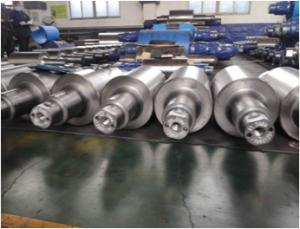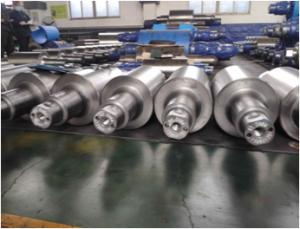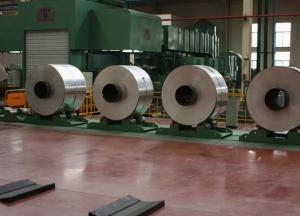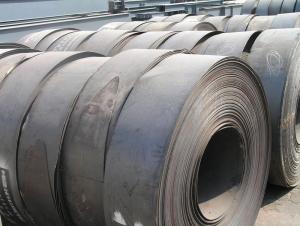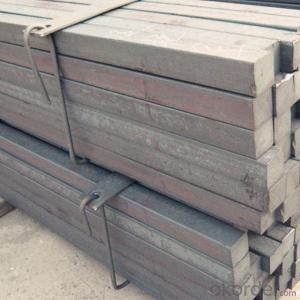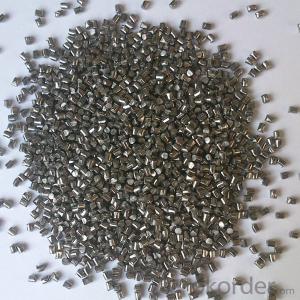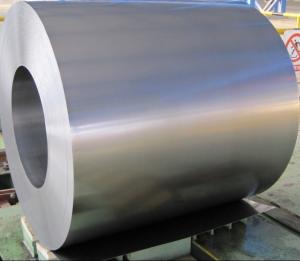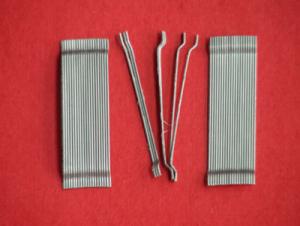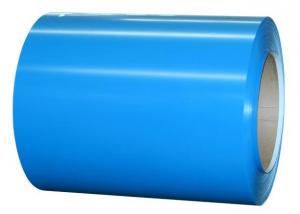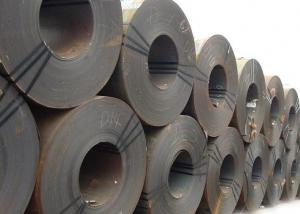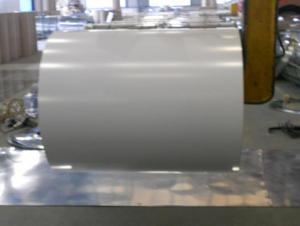Hign Quality and useful Casting Roll Material
- Loading Port:
- Tianjin
- Payment Terms:
- TT
- Min Order Qty:
- 8 unit
- Supply Capability:
- 4 unit/month
OKorder Service Pledge
OKorder Financial Service
You Might Also Like
The main working parts and tools that produce continuous plastic deformation of the metal on the rolling mill. The roll is mainly composed of three parts: roll body, roll neck and shaft head. The roll body is the middle part of the roll that actually participates in rolling the metal. It has a smooth cylindrical or grooved surface. The roll neck is installed in the bearing, and the rolling force is transmitted to the stand through the bearing seat and the pressing device. The shaft end of the transmission end is connected with the gear seat through the connecting shaft, and transmits the rotating torque of the motor to the roller. The rolls can be arranged in the form of two-roll, three-roll, four-roll or multi-roll in the mill stand.The roll neck is installed in the bearing, and the rolling force is transmitted to the stand through the bearing seat and the pressing device. The shaft end of the transmission end is connected with the gear seat through the connecting shaft, and transmits the rotating torque of the motor to the roller. The rolls can be arranged in the form of two-roll, three-roll, four-roll or multi-roll in the mill stand.
- Q:How do steel products contribute to the construction of theme-based botanical gardens?
- Steel products contribute to the construction of theme-based botanical gardens in several ways. Firstly, steel is a durable and reliable material that can withstand various weather conditions, making it ideal for structures like greenhouses, arboretums, and walkways in the gardens. Additionally, steel can be easily molded and fabricated into different shapes, allowing for the creation of intricate and unique designs that align with the theme of the garden. Steel products such as fences, gates, and decorative elements also enhance the aesthetics and security of the botanical gardens, creating a visually appealing and safe environment for visitors to enjoy.
- Q:What are the different types of steel gratings and walkways available?
- There are several different types of steel gratings and walkways available, including standard welded steel gratings, pressure-locked gratings, riveted gratings, and heavy-duty gratings. These gratings come in various designs and sizes to cater to different applications and load requirements. Additionally, there are also different surface finishes available, such as galvanized, painted, or untreated, depending on the desired level of corrosion resistance and aesthetic appeal.
- Q:What are the applications of steel forgings in the mining industry?
- Steel forgings have various applications in the mining industry, including the production of heavy machinery and equipment, such as crushers, conveyors, and drilling tools. These forgings provide high strength and durability, ensuring reliable performance in harsh mining environments. Additionally, steel forgings are used in the construction of mine shafts and tunnels, as well as in the manufacturing of wear-resistant components for mining machinery, enhancing their longevity and reducing maintenance costs.
- Q:How can steel products be recycled?
- Steel products can be recycled by first collecting and sorting them from other waste materials. The collected steel is then cleaned and processed to remove impurities. It is then melted down in a furnace and transformed into new steel products, which can be used in various industries. This recycling process helps conserve natural resources, reduce energy consumption, and minimize environmental pollution.
- Q:How is steel used in the construction of railway stations?
- Steel is used in the construction of railway stations for various purposes such as structural support, reinforcement, and the fabrication of platforms, tracks, and station components. Its high strength and durability make it ideal for withstanding heavy loads, ensuring the safety and stability of the station infrastructure.
- Q:How is steel used in the production of laboratory furniture?
- Steel is commonly used in the production of laboratory furniture due to its durability, strength, and resistance to corrosion. It is used for constructing lab benches, cabinets, and shelves, providing a sturdy and stable surface for experiments and equipment. Steel also allows for easy cleaning and maintenance, making it suitable for a sterile laboratory environment.
- Q:What are the different types of steel wire mesh and grids available?
- There are several different types of steel wire mesh and grids available, including welded wire mesh, woven wire mesh, expanded metal mesh, and perforated metal mesh. Each type has its own unique characteristics and is used for various applications such as filtration, reinforcement, security, and separation.
- Q:How do steel products contribute to the defense and military sector?
- Steel products play a crucial role in the defense and military sector as they are used in the production of various equipment and structures. Steel is known for its strength, durability, and resistance to damage, making it an ideal material for manufacturing weapons, vehicles, submarines, aircraft carriers, and other military hardware. Additionally, steel is used in constructing military infrastructure such as airfields, barracks, and command centers, providing the necessary protection and support for military operations. Overall, steel products contribute significantly to the defense and military sector by ensuring the reliability, safety, and effectiveness of various defense systems and infrastructure.
- Q:How is steel used in the production of medical devices?
- Steel is used in the production of medical devices due to its strength, durability, and resistance to corrosion. It is commonly used for manufacturing surgical instruments, implants, and various medical equipment such as scalpel blades, forceps, needles, and stents. The properties of steel make it ideal for these applications as it provides reliability, precision, and ease of sterilization, ensuring the safety and effectiveness of medical devices used in patient care.
- Q:How is steel forgings inspected for quality assurance?
- Steel forgings are inspected for quality assurance through various methods, including visual inspection, dimensional checks, and non-destructive testing. Visual inspection involves examining the surface for any defects, such as cracks or porosity. Dimensional checks ensure that the final product meets the required specifications and tolerances. Non-destructive testing techniques, such as ultrasonic or magnetic particle testing, are used to detect internal defects or irregularities. These inspection methods help ensure the quality and integrity of steel forgings before they are used in various applications.
1. Manufacturer Overview |
|
|---|---|
| Location | |
| Year Established | |
| Annual Output Value | |
| Main Markets | |
| Company Certifications | |
2. Manufacturer Certificates |
|
|---|---|
| a) Certification Name | |
| Range | |
| Reference | |
| Validity Period | |
3. Manufacturer Capability |
|
|---|---|
| a)Trade Capacity | |
| Nearest Port | |
| Export Percentage | |
| No.of Employees in Trade Department | |
| Language Spoken: | |
| b)Factory Information | |
| Factory Size: | |
| No. of Production Lines | |
| Contract Manufacturing | |
| Product Price Range | |
Send your message to us
Hign Quality and useful Casting Roll Material
- Loading Port:
- Tianjin
- Payment Terms:
- TT
- Min Order Qty:
- 8 unit
- Supply Capability:
- 4 unit/month
OKorder Service Pledge
OKorder Financial Service
Similar products
New products
Hot products
Related keywords
